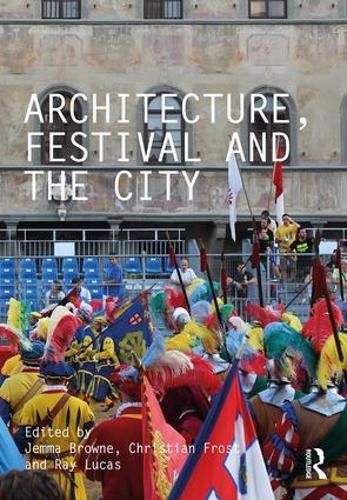Readings Newsletter
Become a Readings Member to make your shopping experience even easier.
Sign in or sign up for free!
You’re not far away from qualifying for FREE standard shipping within Australia
You’ve qualified for FREE standard shipping within Australia
The cart is loading…






Historically the urban festival served as an occasion for affirming shared convictions and identities in the life of the city. Whether religious or civic in nature, these events provided tangible expressions of social, cultural, political, and religious cohesion, often reaffirming a particular shared ethos within diverse urban landscapes. Architecture has long served as a key aspect of this process exhibiting continuity in the flux of these representations through the parading of elaborate ceremonial floats, the construction of temporary buildings, the ‘dressing’ of existing urban space, the alternative occupations of the everyday, and the construction of new buildings and spaces which then become a part of the background fabric of the city.
This book examines how festivals can be used as a lens to examine the relationship between city and citizen and questions whether this is fixed through time, or has been transformed as a response to changes in the modern urban condition. Architecture, Festival and the City looks at the multilayered nature of a diverse selection of festivals and the way they incorporate both orderly (authoritative) and disorderly (subversive) components. The aim is to reveal how the civic nature of urban space is utilised through festival to represent ideas of belonging and identity. Recent political and social gatherings also raise questions about the relationship of these events to ‘ritual’ and whether traditional practices can serve as meaningful references in the twenty-first century.
$9.00 standard shipping within Australia
FREE standard shipping within Australia for orders over $100.00
Express & International shipping calculated at checkout
Historically the urban festival served as an occasion for affirming shared convictions and identities in the life of the city. Whether religious or civic in nature, these events provided tangible expressions of social, cultural, political, and religious cohesion, often reaffirming a particular shared ethos within diverse urban landscapes. Architecture has long served as a key aspect of this process exhibiting continuity in the flux of these representations through the parading of elaborate ceremonial floats, the construction of temporary buildings, the ‘dressing’ of existing urban space, the alternative occupations of the everyday, and the construction of new buildings and spaces which then become a part of the background fabric of the city.
This book examines how festivals can be used as a lens to examine the relationship between city and citizen and questions whether this is fixed through time, or has been transformed as a response to changes in the modern urban condition. Architecture, Festival and the City looks at the multilayered nature of a diverse selection of festivals and the way they incorporate both orderly (authoritative) and disorderly (subversive) components. The aim is to reveal how the civic nature of urban space is utilised through festival to represent ideas of belonging and identity. Recent political and social gatherings also raise questions about the relationship of these events to ‘ritual’ and whether traditional practices can serve as meaningful references in the twenty-first century.